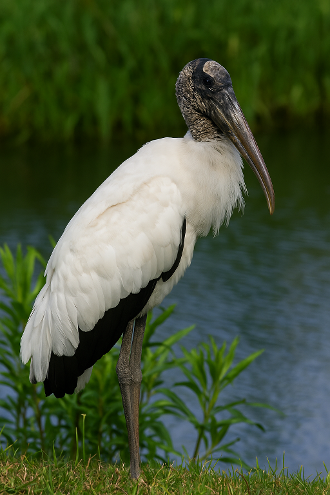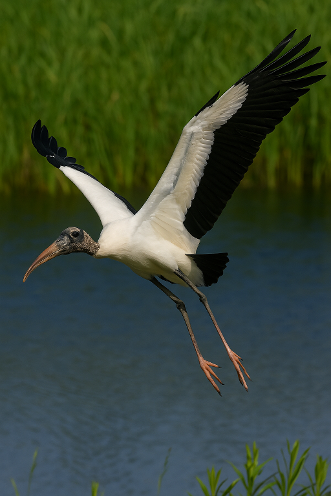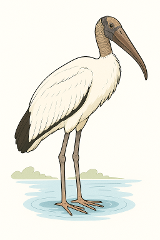


|
woodstork.png Size : 1194.114 Kb Type : png |



Meet the Woodstork
Graceful in flight and striking in appearance, the Wood Stork is one of Florida’s most distinctive wading birds. With its long legs, bald dark head, and impressive wingspan of nearly five feet, this gentle giant glides silently over wetlands in search of food. Once endangered, the Wood Stork has made a remarkable recovery, now a welcome sight in Florida’s marshes and nature reserves.
Habitat –
Wood Storks thrive in warm, wet environments, including freshwater and brackish
swamps, marshes, ponds, and mangroves. In Florida, they are often seen wading
through shallow wetlands or perched in cypress trees near water. They prefer
areas with seasonal flooding, which concentrates fish and makes feeding easier.
Diet –
Their diet consists mainly of small fish, frogs, crustaceans, and aquatic
insects. Wood Storks feed by a unique method called tactile feeding—they
wade slowly through the water with their bill open, snapping it shut instantly
when they sense movement.
Lifespan –
In the wild, Wood Storks can live up to 20 years. In protected
environments or captivity, some individuals have been known to live slightly
longer.
Special Behavior –
Wood Storks are expert gliders, soaring on thermal air currents with graceful,
effortless movement. During nesting season, they gather in large colonies and build bulky stick nests high in trees. Their bald, dark heads and long bills
give them a prehistoric look, but they play a vital ecological role as
indicators of healthy wetland ecosystems.

|
woodstork.png Size : 1194.114 Kb Type : png |
